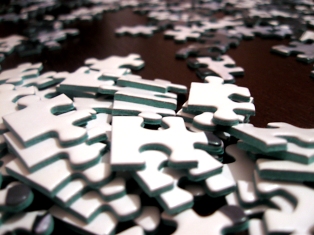 When we were young, many of us learned that certain emotions are bad or wrong to feel or express. For instance, if we expressed naturally arising emotions such as frustration, fear, or sadness, perhaps our parents believed those emotions are harmful and so attempted to squelch their expression. Similarly, if we expressed joy, excitement, or exuberance, believe it or not, sometimes our parents can believe those emotions are also wrong to express in excess, and so they will teach us (in a variety of creative ways) that the expression of those energies is not acceptable.
When we were young, many of us learned that certain emotions are bad or wrong to feel or express. For instance, if we expressed naturally arising emotions such as frustration, fear, or sadness, perhaps our parents believed those emotions are harmful and so attempted to squelch their expression. Similarly, if we expressed joy, excitement, or exuberance, believe it or not, sometimes our parents can believe those emotions are also wrong to express in excess, and so they will teach us (in a variety of creative ways) that the expression of those energies is not acceptable.
As young children, we depend upon our caregivers for survival. This means that our basic autonomic survival mechanisms will engage when our caregivers strongly disapprove of something we are doing or expressing, and we’ll begin to mold ourselves in whatever ways are necessary to meet their expectations and demands. If our caregivers clearly do not want us to feel or express certain emotions, we will begin to resist or repress those emotions whenever they arise in us. This resistance/repression is actually an internal protective mechanism formed to keep us safe—that is, safely away from feeling or expressing the emotions we aren’t allowed to feel, given our circumstances. This protective mechanism becomes ingrained and autonomic; that is, it will be triggered automatically whenever these “dangerous” emotions begin to arise in us, effectively keeping us away from feeling or expressing them. The amazing thing is all this happens without our conscious minds needing to do anything!
 It turns out that it takes quite a bit of energy to repress natural emotion, and we experience this resistance as various kinds of suffering. The suffering can take the form of anxiety, rage, depression, shame, blame, self-reproach, fear, restlessness, and any other multitude of unpleasant (or downright awful) experiences. The confusion here is that we often label these experiences as “emotions.” But these forms of suffering are NOT true emotions. Quite the opposite is the case. These states are instead the inner experience of the repression of natural emotion. The suffering itself actually forms the protective mechanism we have developed to keep us away from feeling the underlying emotion. (I should note here as well that these states don’t just protect us from feeling unwanted emotion, but they can also protect us from feeling the overwhelming energy and sensations associated with unintegrated trauma, something to be explored in future posts.)
It turns out that it takes quite a bit of energy to repress natural emotion, and we experience this resistance as various kinds of suffering. The suffering can take the form of anxiety, rage, depression, shame, blame, self-reproach, fear, restlessness, and any other multitude of unpleasant (or downright awful) experiences. The confusion here is that we often label these experiences as “emotions.” But these forms of suffering are NOT true emotions. Quite the opposite is the case. These states are instead the inner experience of the repression of natural emotion. The suffering itself actually forms the protective mechanism we have developed to keep us away from feeling the underlying emotion. (I should note here as well that these states don’t just protect us from feeling unwanted emotion, but they can also protect us from feeling the overwhelming energy and sensations associated with unintegrated trauma, something to be explored in future posts.)
So, what is important about this distinction between emotion and states of suffering? Well, if you have been around the block in the self-help world, I’m sure you’ve heard by now how important it is to “feel your emotions.” But, the problem is if you think that the rage, the anxiety, the shame, the depression, the restlessness, etc., are the emotions everyone is telling you you’re supposed to be feeling, you might be wondering when the healing is going to start because you still feel like crap even though you keep feeling all these “emotions.” After all, you are feeling these things… over and over again… so shouldn’t you be healing by now?
The issue here is that you are not actually feeling the energy (the emotion) that you have repressed. Rather, what is happening is your protective mechanism is being triggered. The rage, the shame, the anxiety, the depression… none of these are the underlying emotion. You are experiencing what it feels like to resist and repress the emotion (the protective mechanism) and it hurts—a lot.
The natural energy (the true emotion), when actually experienced and allowed to move in a way that is not overwhelming, feels nothing at all like these forms of suffering. In fact, when I started to feel authentic emotion, it was hard for me to even label it because it was so different than what I had been experiencing (depression) for so many years. A  real emotion, when felt fully, rises in me like a wave, crests, and then naturally dissipates. It is simply an energy wave with a certain “flavor” that moves through me. It is powerful, yes, but it does not continually spin and never resolve. Actually, in my experience, it feels good to feel real emotion, no matter what flavor that emotion might take.
real emotion, when felt fully, rises in me like a wave, crests, and then naturally dissipates. It is simply an energy wave with a certain “flavor” that moves through me. It is powerful, yes, but it does not continually spin and never resolve. Actually, in my experience, it feels good to feel real emotion, no matter what flavor that emotion might take.
It is actually very easy to distinguish between states of suffering and the movement of real emotion. States of suffering such as I described above (rage, shame, anxiety, depression, etc.) will come in repeating patterns. The feelings will be triggered and arise over and over again, with no real resolution, no matter how much they are “felt.” There will be patterned thoughts, beliefs, and physiological/physical changes that arise at the same time. Also, the states will probably escalate over time because it takes more and more energy to repress more and more emotion, thus greater suffering is present in the resistance and repression. In contrast, a real emotion is a one-time deal. It will move through like a wave, and it will do so rather quickly. That doesn’t mean a similar emotion won’t arise again, but it won’t feel like it’s the same thing happening over and over again with no resolution or progress.
Because these states of suffering become repeating patterns that get more intense over time, they are often labeled as mental illnesses such as anxiety disorder, depression, bipolar disorder, etc. Eventually, the suffering can also become a significant contributor to physical diseases and disorders, such as autoimmune conditions, chronic pain, chronic fatigue, inflammatory conditions, and more. 
Perhaps by now you can see how these states of suffering distract us away from experiencing the underlying emotion because we become focused on the suffering itself. Our attention turns toward trying to get rid of the suffering. We take drugs to treat the depression and anxiety and chronic pain. We read self-help books to try to fix our “destructive belief systems.” But because we unconsciously believe that the underlying emotions are wrong or dangerous to feel, our suffering—which is the protective mechanism itself—is actually designed to distract us away from feeling the original emotion. That’s its job! Essentially, we become hypnotized by our own suffering. As you can see, our protective mechanisms are very effective at keeping us away from the emotions we aren’t supposed to feel.
The rubber meets the road in our healing journey when we finally turn toward those aspects of ourselves that are suffering and meet them in a different way. The rage, the anxiety, the shame, the depression… when these protective mechanisms are met with curiosity rather than animosity, we begin to realize how they served us in the past and continue to serve us even today. At the same time, we can also see clearly the ways in which these protective mechanisms no longer serve us, and in fact hurt us and hurt others in deep and profound ways. It is when we are able hold both of these truths in our hearts that something else—another option—becomes possible. Through this process, the protective mechanisms can begin to let go, and when they do, the energy that is underneath them will come to the surface to be felt and integrated. I have found this to be the crux of healing this kind of core wound.
 This same topic can be explored in a more nuanced way as it relates to trauma. To say that suppressing emotion is how and why we form these protective mechanisms is actually incomplete and bit simplistic. With trauma, the sensations and feelings we experience are literally overwhelming—so overwhelming that we are unable to integrate and process them at the time of the experience if we did not have the proper support. Our system then isolates that unintegrated energy (so that we can continue to function) and forms protective mechanisms to keep us away from re-experiencing the overwhelm. I’ll be exploring this in more depth in future posts. Stay tuned!
This same topic can be explored in a more nuanced way as it relates to trauma. To say that suppressing emotion is how and why we form these protective mechanisms is actually incomplete and bit simplistic. With trauma, the sensations and feelings we experience are literally overwhelming—so overwhelming that we are unable to integrate and process them at the time of the experience if we did not have the proper support. Our system then isolates that unintegrated energy (so that we can continue to function) and forms protective mechanisms to keep us away from re-experiencing the overwhelm. I’ll be exploring this in more depth in future posts. Stay tuned!


















